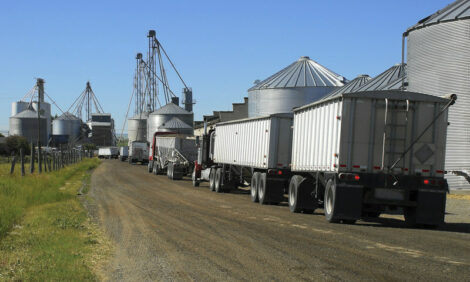



CME: Smaller Supplies and High Demand
US - CME's Daily Livestock Report for 8 December 2008.It was generally a positive day for livestock markets on Monday as cattle and hog futures
were buoyed by more upbeat trading in equities and hopes that US government spending may
provide a boost to the economy in 2009. The only blemish for the day was the decline in nearby lean
hog futures as well as generally lower pork belly prices. The nearby hog market remains concerned
with the more immediate prospects of plentiful pork and limited export markets. Ham prices, which
have provided a much needed boost in recent days, will decline in value after the holidays and the
market remains uncertain how the absence of export buyers will affect pricing.
Going forward, however, the market seems to think that a combination of smaller
supplies and good demand in the US domestic market should be supportive of prices. And
who are we to argue with the market?
June lean hog futures may be off the $100 level they established
in early July but they have been remarkably steady since October, again suggesting that, for the
moment, the market seems comfortable with lean hog values in the high seventies for next summer.
Now that may seem like a much cheaper price, especially when compared to the $100 levels. But it is
important to keep in mind that the $100 hogs were predicated on the reality of $8 corn and $140 oil.
What happens when corn is below $3 and the gasoline station down the street sells unleaded regular
for $1.65? Not very long ago, in the summer of 2007 for that matter, corn prices were hovering around
$3 per bushel and export markets had cooled off some, in large part due to reduced shipments to Mexico
(sound familiar). Lean hog cash markets that summer traded in the low 70s and producers in general
made money, although at the time they were fretting about prospects of much higher feed and
energy costs into the future. The US economy also had not collapsed and no one really knew what
credit default swaps were. Now if we all do our part and eat more hot dogs, maybe that will help offset
some of the lost export business but the overall supplies will be critical.
The breeding herd on December 1 is
expected to be down about 3.5 per cent from the previous year (this writer’s expectation). But genetics continues
to improve, productivity gains are there and there is little disease pressure. Producers are also
showing that they really are not in the mood for any more cutbacks (see charts below). So if $78 hogs are to be a reality, exports will really need to come through, supplies
need to tighten up, and don’t forget the hot dogs.










